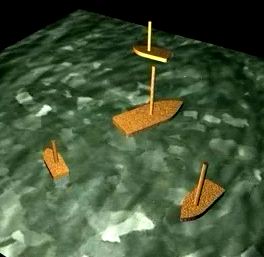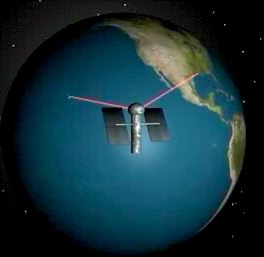
Alfred Wegner, in 1960 proposed the concept of "continental drift", with the general idea that the continents skated around on top of some layer of rock that encapsulated the earth.
There were a few problems with this theory. First, there was no motive power to push the continents over the surface. They obviously weren't running downhill.
Secondly there was far too much friction. between a continent and any rock layer. to allow it to pass. There was at the time no direct evidence to support the theory, although there was a good deal of indirect evidence ...
Continental shapes seemed to fit together, continuation of mountain ranges across ocean boundaries, placement of rock strata, etc. etc.

Although not among the original data supporting a consistent theory for continental movement, recent studies using satellites and lasers have proved beyond any doubt that land masses are in motion relative to each other.
An earth based laser is reflected from a satellite back to a receiving station. This method of measurement is capable of differentiating down to 1 cm.
By taking the same measurements each year it is possible to determine if any two points on the earth are getting closer, staying the same, or moving farther apart.
By recording such data from many places, a clear picture of movement is available.
The original proof came from measuring the magnetic properties of rocks around the central mountain ridges in the ocean. This will be explained in far more detail in later chapters.
The measurements uncovered three types of motion on the earth, and hence three types of margins between the continents and their underlying structures.
1.) Divergent Margins - objects moving away from one another.
2.) Convergent Margins - objects moving toward one another.
3.) Transform Margins - objects move laterally past one another.
| NEXT | TOC | PREV |